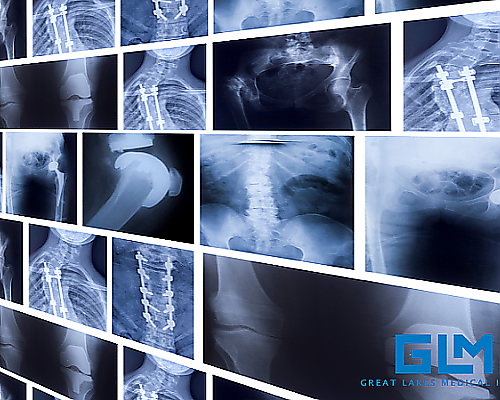Our Blog
Can Advanced Imaging Reveal Early Lung Changes from Environmental Exposure?

Environmental factors—such as air pollution, industrial exposure, and smoking—can significantly impact lung health. In Western New York, where seasonal changes and older infrastructure can contribute to varying air quality, it’s important to identify lung changes early before symptoms develop. At Great Lakes Medical Imaging (GLMI), we provide advanced diagnostic imaging that can detect subtle signs of lung damage, empowering physicians and patients to act before conditions become severe.
Why Lung Health Screening Matters in Buffalo and Western NY
The Buffalo region is known for its industrial history and harsh winters, both of which can affect air quality. Residents may be exposed to pollutants such as particulate matter, mold, and secondhand smoke—all of which can contribute to chronic lung diseases. Conditions like chronic obstructive pulmonary disease (COPD), lung cancer, and pulmonary fibrosis often progress silently, making early detection critical for better outcomes.
Advanced imaging tests can identify structural changes and abnormalities long before breathing problems appear, offering an opportunity for preventive care and early treatment.
Environmental Risks Linked to Lung Damage
Environmental exposures vary, but common risks in Western NY include:
- Industrial pollutants: Residue from older manufacturing operations or active industrial sites.
- Seasonal allergens: Mold, pollen, and other irritants that can exacerbate chronic lung conditions.
- Secondhand smoke: Exposure at home or in social environments.
- Occupational hazards: Construction, manufacturing, or agricultural work that involves dust, asbestos, or chemical fumes.
Even low-level exposure over time can lead to cumulative lung damage, underscoring the value of routine screening for those at risk.
Imaging Options for Early Lung Detection
GLMI offers several imaging modalities that provide detailed insight into lung health and function:
Low-Dose CT Scans
Low-dose CT (LDCT) is the preferred screening tool for detecting early lung cancer and other structural changes. It uses minimal radiation and provides highly detailed cross-sectional images of the lungs, making it ideal for high-risk individuals, including smokers and those exposed to environmental hazards.
Chest X-Rays
While less detailed than CT scans, chest X-rays are a fast and effective way to identify significant lung changes, infections, or fluid accumulation. They’re often used as an initial screening tool in routine checkups or emergency evaluations.
Nuclear Medicine Lung Scans
These scans evaluate blood flow and air movement in the lungs, which can help diagnose conditions like pulmonary embolism or chronic obstructive lung disease.
MRI
MRI is occasionally used to evaluate soft tissue structures and blood vessels in the chest, particularly when CT scans are not recommended.
Who Should Consider Lung Imaging?
Lung imaging isn’t just for people with symptoms. Preventive imaging is recommended for individuals who have:
- A history of smoking (current or former)
- Occupational exposure to asbestos, silica, or industrial chemicals
- Long-term exposure to air pollution or secondhand smoke
- Chronic respiratory symptoms such as cough or shortness of breath
- A family history of lung disease or lung cancer
If you fall into any of these categories, it’s worth discussing lung imaging options with your primary care provider or contacting GLMI for more information.
How Early Detection Improves Outcomes
Detecting lung changes early allows for more effective intervention. For example:
- Lung cancer: LDCT scans can identify nodules at their earliest stages, significantly improving survival rates.
- COPD: Early imaging findings can prompt lifestyle changes and treatments that slow disease progression.
- Occupational lung diseases: Identifying patterns of scarring or inflammation can lead to earlier workplace interventions and medical support.
Ultimately, early imaging leads to better health outcomes and improved quality of life for at-risk individuals.
Why Choose GLMI for Lung Imaging in Buffalo?
GLMI combines state-of-the-art imaging technology with a patient-centered approach to care. Our radiologists have extensive experience interpreting thoracic imaging and collaborate closely with referring physicians to ensure timely, accurate diagnoses. With multiple locations throughout Western NY—including Williamsville, Cheektowaga, and Orchard Park—we make it convenient for patients to access advanced lung screenings close to home.
Schedule Your Lung Screening Today
Whether you have known risk factors or simply want peace of mind, lung imaging can provide critical insights into your respiratory health. Contact GLMI today to schedule your lung screening or learn more about our low-dose CT and other advanced imaging services.
Medical Disclaimer: This article is intended for general informational purposes only and does not substitute for professional medical advice. Always consult your physician or qualified healthcare provider about symptoms, risk factors, and appropriate screening options for your specific situation.
‹ Back









